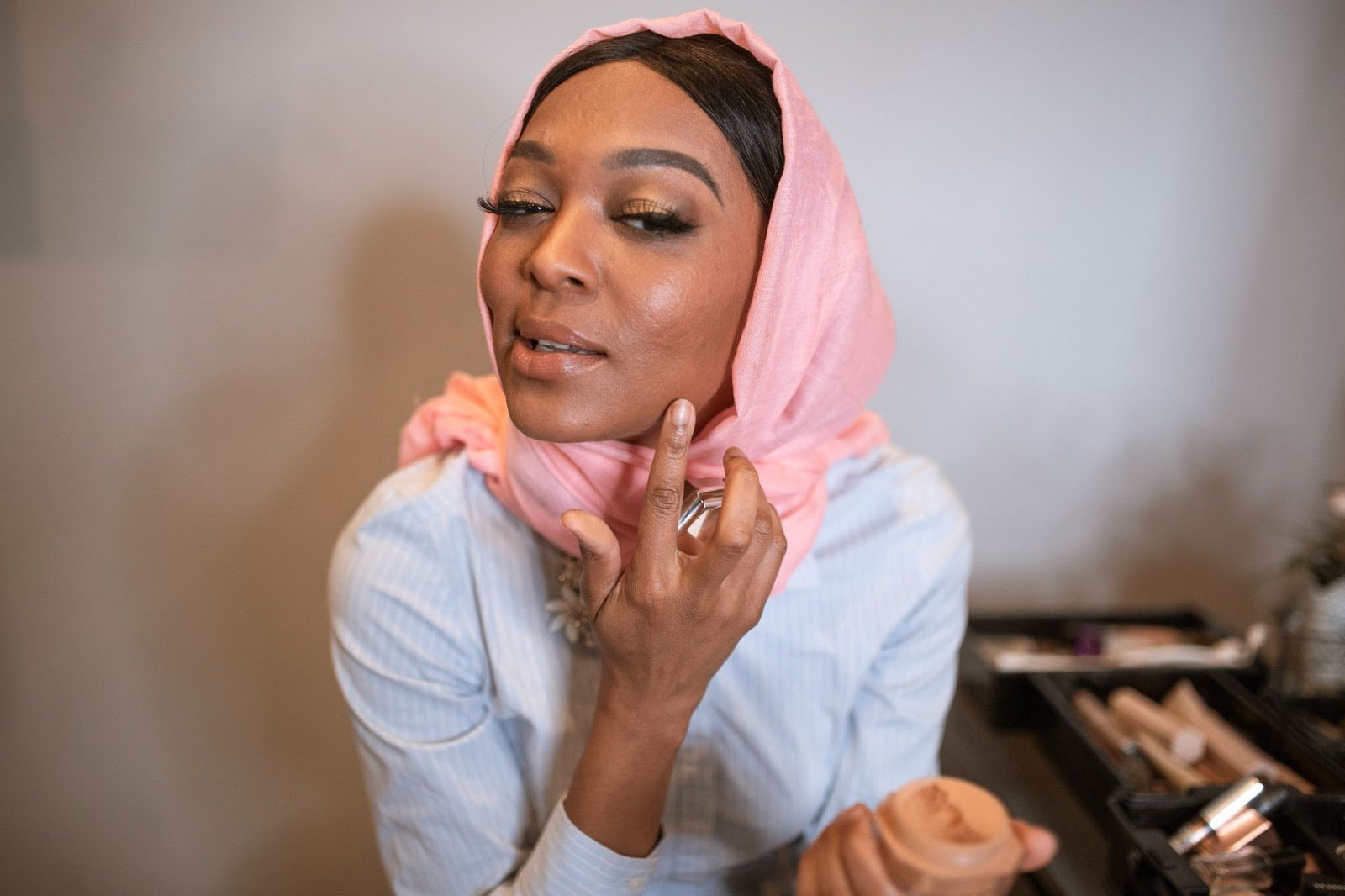Acne has been a part of popular culture for as long as we can remember. It is seen on TV, whether in your favorite show or advertisements. We even read about it on social media, as we see celebrities discuss their personal experiences with acne. Maybe those conversations have died down in your day-to-day life as you navigate the adult world, or perhaps those conversations are only starting to happen now as you’re growing up.
Acne is a normal topic of conversation as you go through puberty. Many teens combat acne as their bodies continuously change. Although, what is not as commonly discussed is adult acne. Acne can impact anyone, no matter their age or stage in life. Believe it or not, acne is the most common skin condition in the United States.
Long story short, acne is more common than you might think. Whether acne is something new for you or something you have been struggling with for years, there are ways to minimize your acne and maximize your confidence. One of the best parts is that there are many ways to combat your acne that can be done from your own home with different devices, such as KENZZI’s handsets.
What is Acne?
Acne commonly occurs when your glands produce more oil than normal. When this happens, your pores can get clogged, which is the perfect place for bacteria and/or pimples to form.
Not everyone’s acne looks the same. For some, acne comes in the form of blackheads, which are open, clogged pores. Sometimes, blackheads are not considered to be acne; it just depends on who you speak to. But it’s important not to minimize anyone’s struggles with their skin or compare their experience to yours; we’re all unique!
For others, and most commonly, acne appears as small red tender bumps that are known as papules. A papule is an area of your skin that is raised. They often have distinct borders and can appear in numerous shapes, sizes, and colors. Often, papules are also called skin lesions, a more formal way of discussing the changes to your skin’s texture and color.
Pimples are also a very common stop on the acne journey. Known as pustules, these are papules that have pus at the surface. Pimples can look different for everyone. Sometimes pimples are known as whiteheads; some people even consider cysts to be a form of a pimple by definition. Another critical player in acne is nodules, which are primarily solid and painful lumps underneath the skin. Sometimes people discuss these as undergrounders.
When, Where, and Why Does Acne Occur?
Most commonly, acne makes an unwanted appearance during a time of hormonal imbalance. Acne is not limited to a particular gender or a certain age - it has a mind of its own sometimes. Often teenage boys are hit the hardest by acne. Sometimes women also suffer from more intense acne at specific times in their menstrual cycles or as they enter or go through menopause.
Acne can happen all over your body, but some places are more common than others. One of the most common places that it occurs is on the face. Other locations include the back, chest, and shoulder areas.
Acne occurs for various reasons such as excess oil production, the clogging of hair follicles and pores by oil and dead skin cells, bacteria, and even inflammation. Sometimes your diet also plays a significant role in the appearance of your skin. So can other medications that you might be taking, and even the different stressors of your life.
Unfortunately, acne can take time to heal. It’s better to get ahead of it and do what you can from the start, as acne can sometimes lead to skin scarring and a lot of emotional grief. The good news is that since acne is now more commonly discussed, so are its remedies!
What is Vitamin A?
There are many different ways to combat acne. Although, one prevalent form is through other vitamins and minerals such as vitamin A. Vitamin A is a common group of unsaturated compounds. Does retinol or retinal ring a bell? You may or may not know that these are vitamin A! Vitamin A is a fat-soluble vitamin found in many foods.
You can find two types of vitamin A hiding in many different foods that can be easily incorporated into your diet. The first type of vitamin A can be found in different meat, dairy, poultry, and fish products. The second type is more commonly found in plant-based products such as fruits and veggies.
The Benefits of Vitamin A
Vitamin A has many benefits as it is vital for growth and development and helps support your immune system. It even has a positive influence on your vision. It has antioxidants. Antioxidants do a phenomenal job of protecting the skin as they help reduce and combat free radical production that can damage healthy skin cells. Antioxidants play a prominent role when it comes to skin pigmentation and even wrinkles that come with age.
There are many benefits to vitamin A, some of which can help your skin from the inside out. Vitamin A does a great job of helping decrease inflammation while also increasing your skin cell growth, which supports the healing process of scars and lesions resulting from your acne. The vitamin can even smooth the skin and support an even skin tone while helping combat further environmental damages that your skin may endure. Another great option that promotes an even skin tone, fights acne, and reduces acne scarring is microdermabrasion.
Forms of Vitamin A
The amount of vitamin A that you need is dependent on your sex and your age. So it is important to consider those when thinking about your vitamin A intake. It is important that you incorporate vitamin A into your diet in the correct ways.
As we have mentioned, a prevalent way of incorporating vitamin A into your life is through your diet. Some foods that have higher vitamin A content than others include:
- Cheese, milk, yogurt, and other dairy products
- Eggs
- Oily fish, such as salmon
- Yellow, green, and red leaf-like vegetables
- Yellow fruits
Another way to incorporate vitamin A is into your skincare routine. Vitamin A comes in some topical forms that have been known to help with acne. While a doctor or dermatologist more commonly prescribes these, many people see great results when using vitamin A topically. Vitamin A, when used topically, is often known as a retinoid, which many believe to be an extremely effective way to support the regeneration and quick healing of your skin.
Your doctor may even discuss taking vitamin A orally for your acne. This works similarly to incorporating vitamin A into your diet as both works from the inside to the outside.
Things to Consider When Using Vitamin A for Acne
Just like everything in life, things are good in moderation. It is essential to keep this in mind as there is such a thing as too much vitamin A. This can weaken your bones, which may not be an issue right now, but will be as you age as it will increase the likelihood of a bone fracture if you fall.
Consuming too much vitamin A is also not recommended for people who are pregnant. It is best that you speak to your doctor about what is and what is not recommended for you to consume while you are helping grow a little one.
When using vitamin A topically, your skin becomes more sensitive to the sun. For this reason, it is recommended that you stay out of the sun as much as possible. When you are in the sun and using vitamin A topically, make sure to wear a high SPF sunscreen and a brimmed hat for double protection.
In Conclusion
Vitamin A can be a great way to minimize your acne and maximize your results and your confidence. Although make sure you remember that vitamin A on its own is not the sole solution for acne. You can incorporate other practices into your life to support the healing process from your acne, no matter your age or acne’s location on your body.
Another way to combat acne is to make sure that your skin products are mild and gentle. Self-care is often a great acne-fighting technique: some people like trying facials, chemical peels, dermabrasion, or microdermabrasion. With advancing technology, you can do some of these with at-home handsets.
It is important to remember that everyone is different, and so their skin reacts in different ways. While some people’s skin may really benefit from vitamin A, others may not. Do what is best for you, and you feel the most comfortable with doing. Speak to your doctor to go over the various ways to combat your acne.
Sources:
Read more

With summer fast approaching and having arrived in some places already, now is the best time to iron out your pubic hair removal routine. Many influencers on social media seem to always have everyt...

Thankfully trying to get ahead of your fine lines and wrinkles doesn’t always require a trip to the dermatologist or plastic surgeon. Many anti-aging skin care products you can use from the comfort...

Leave a comment
All comments are moderated before being published.
This site is protected by hCaptcha and the hCaptcha Privacy Policy and Terms of Service apply.